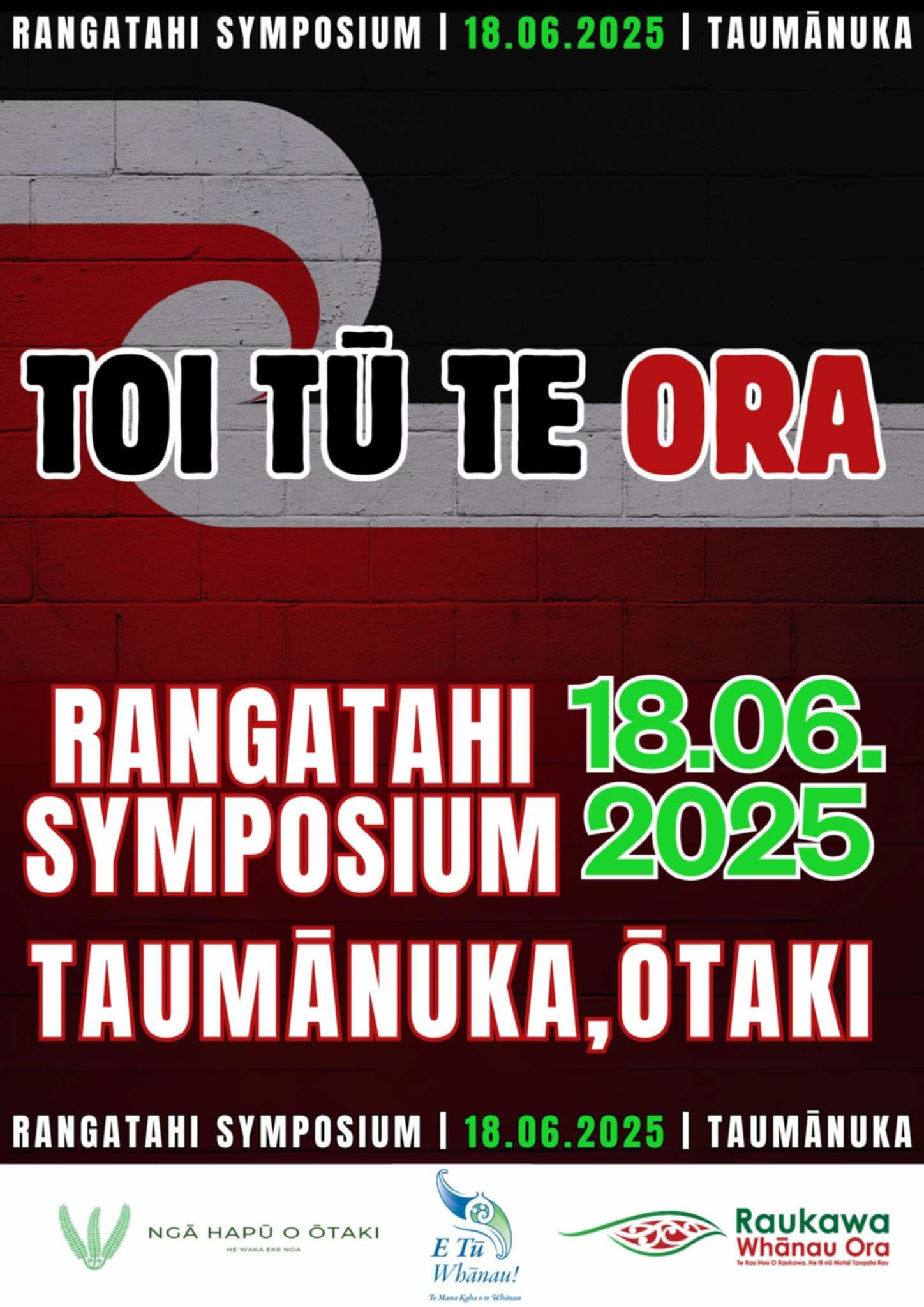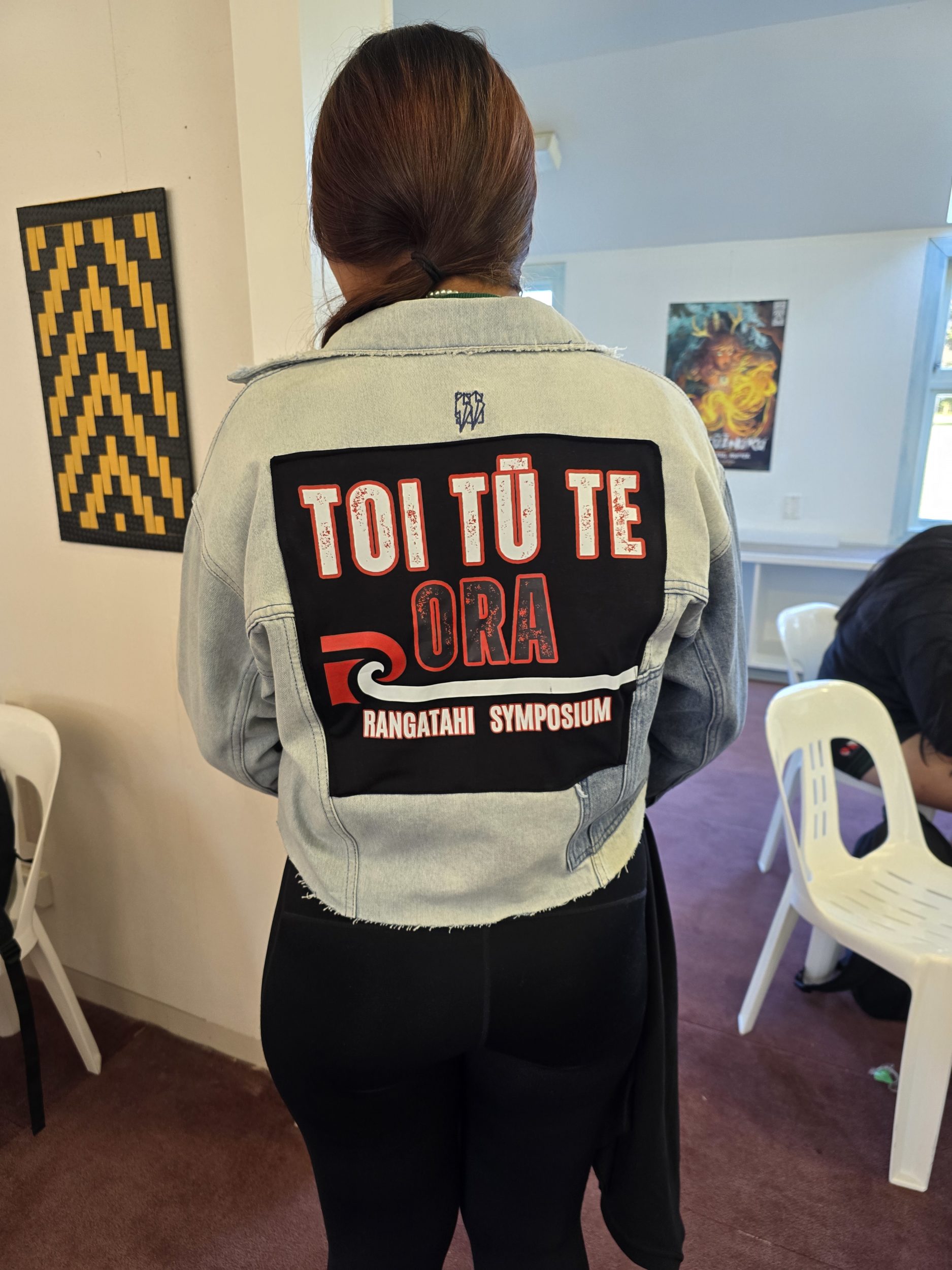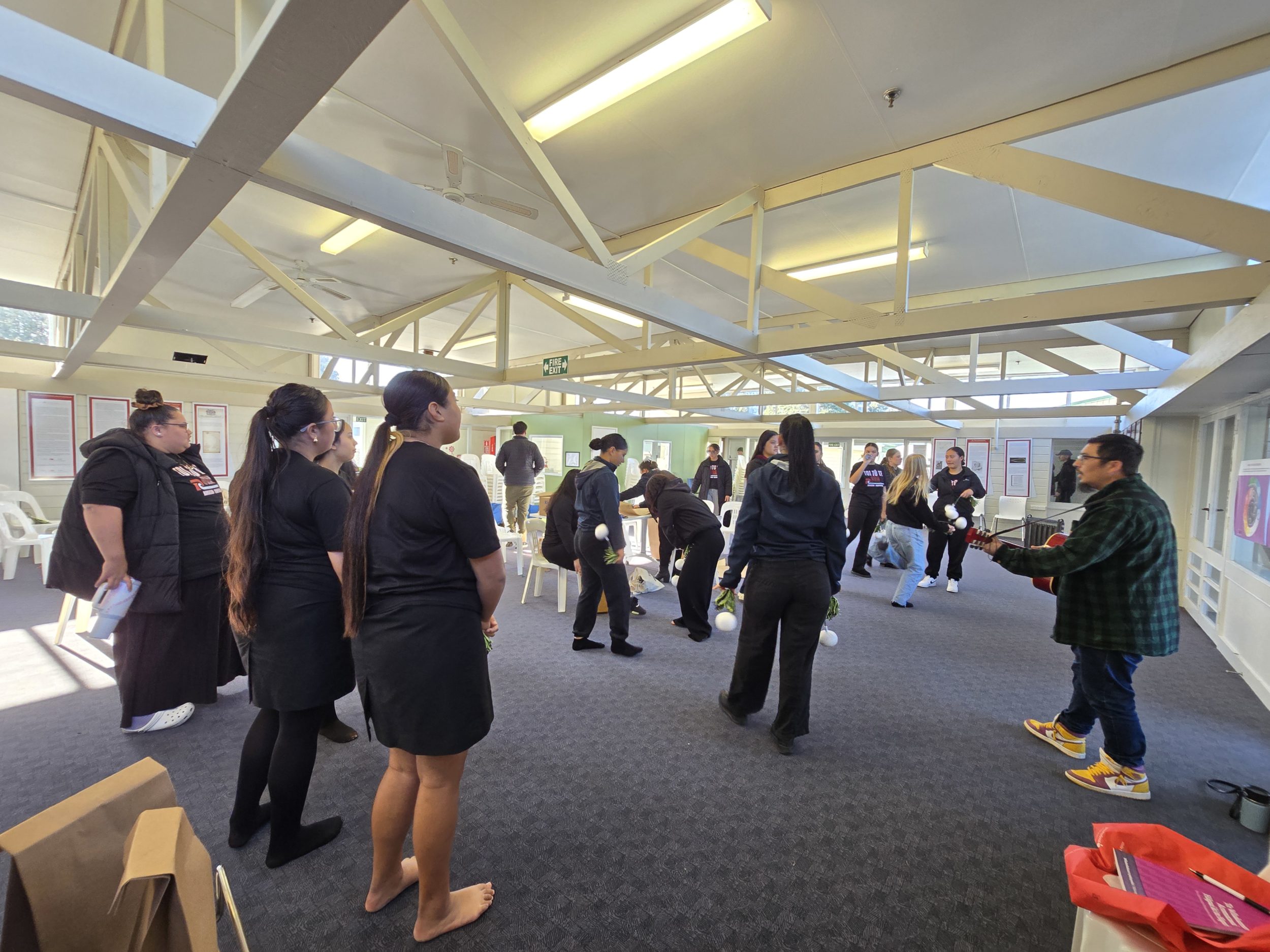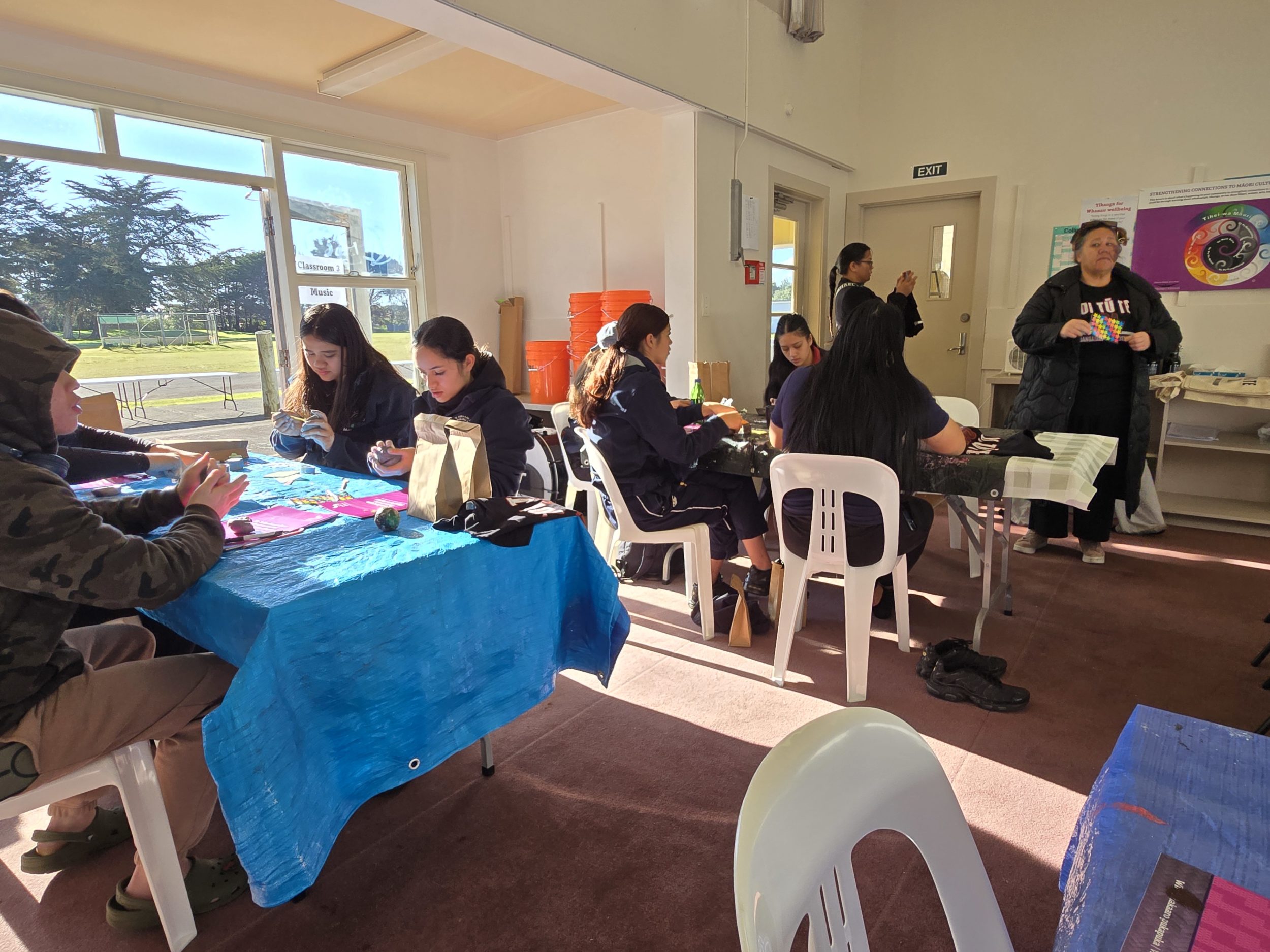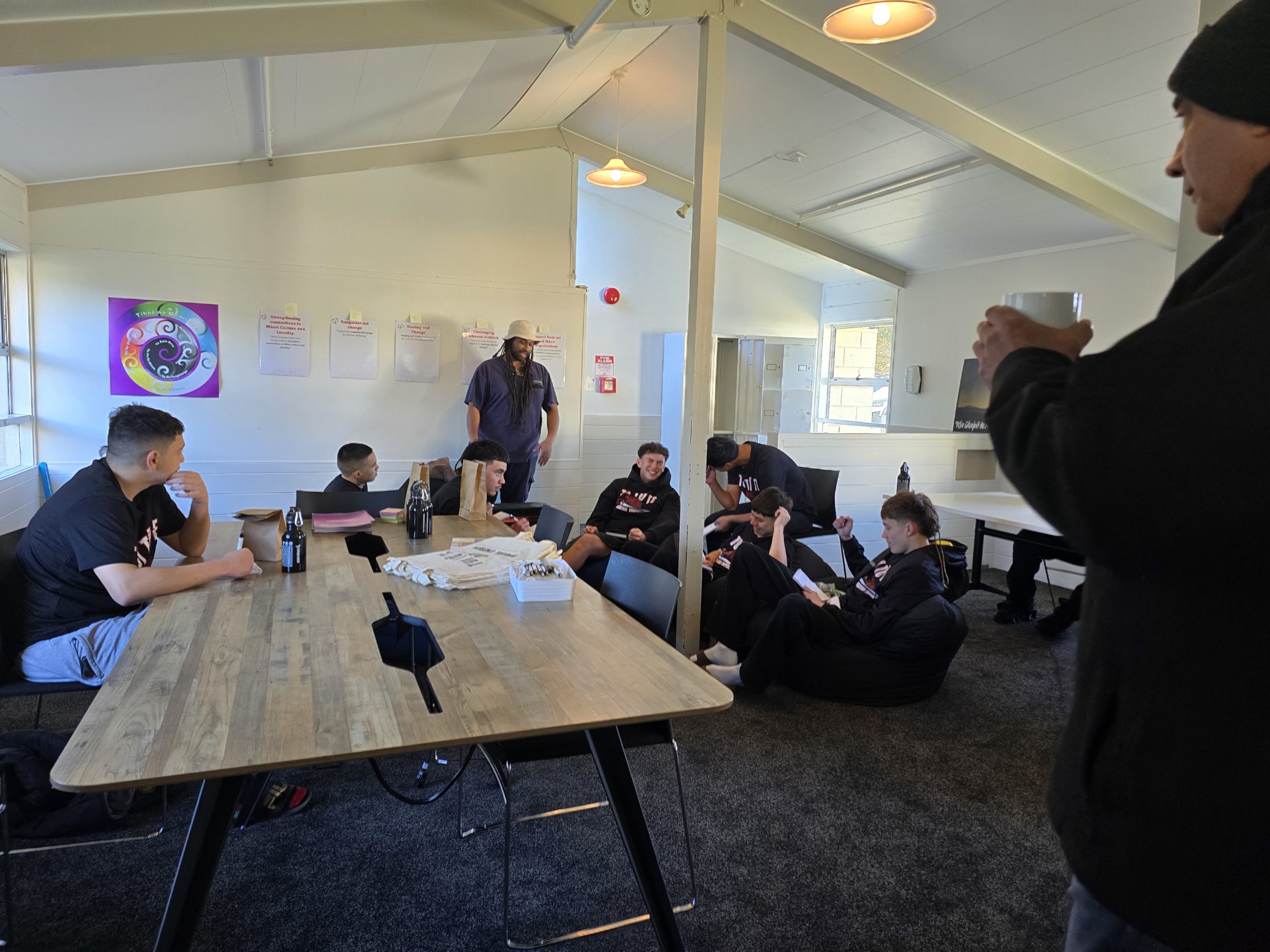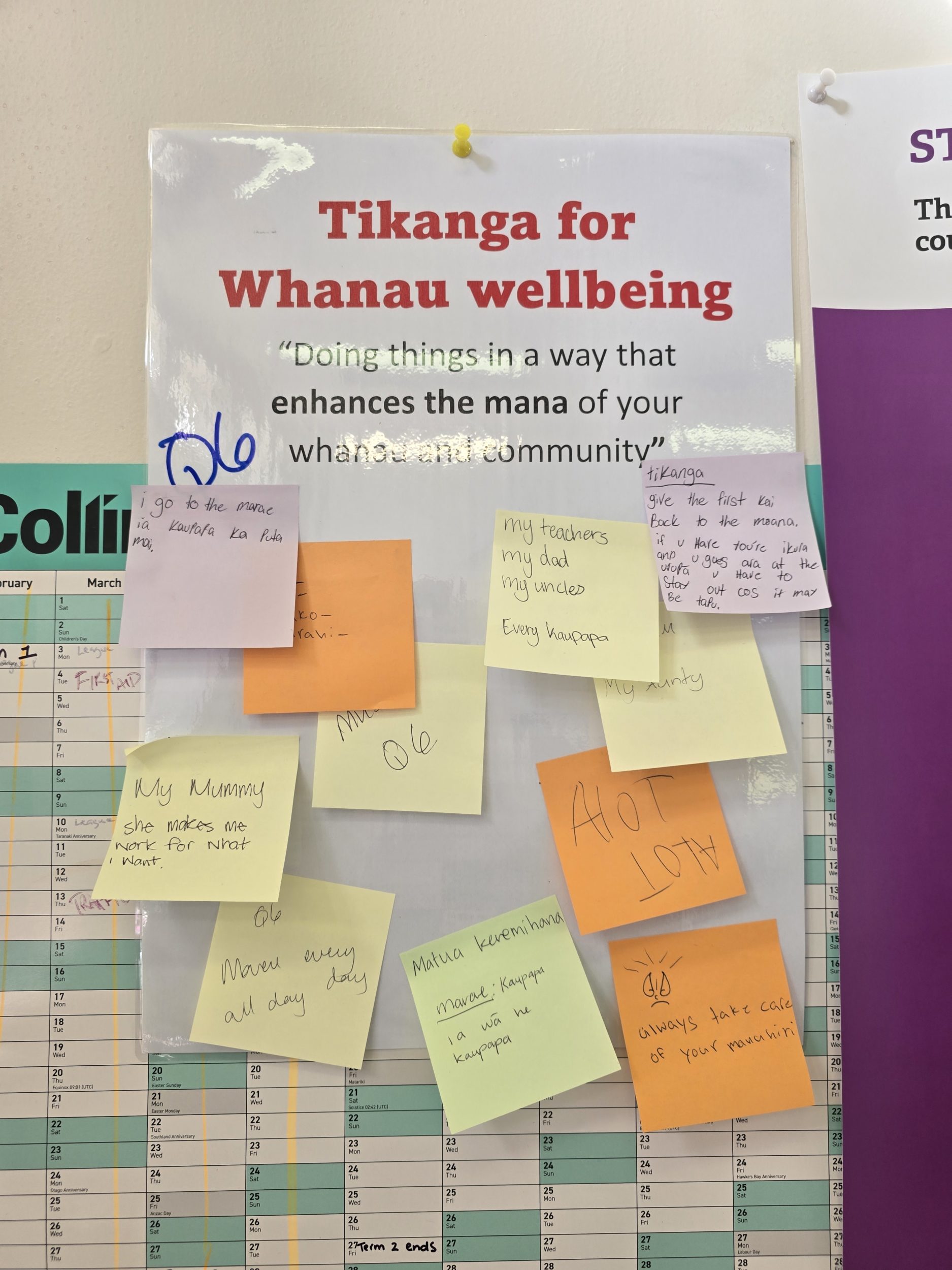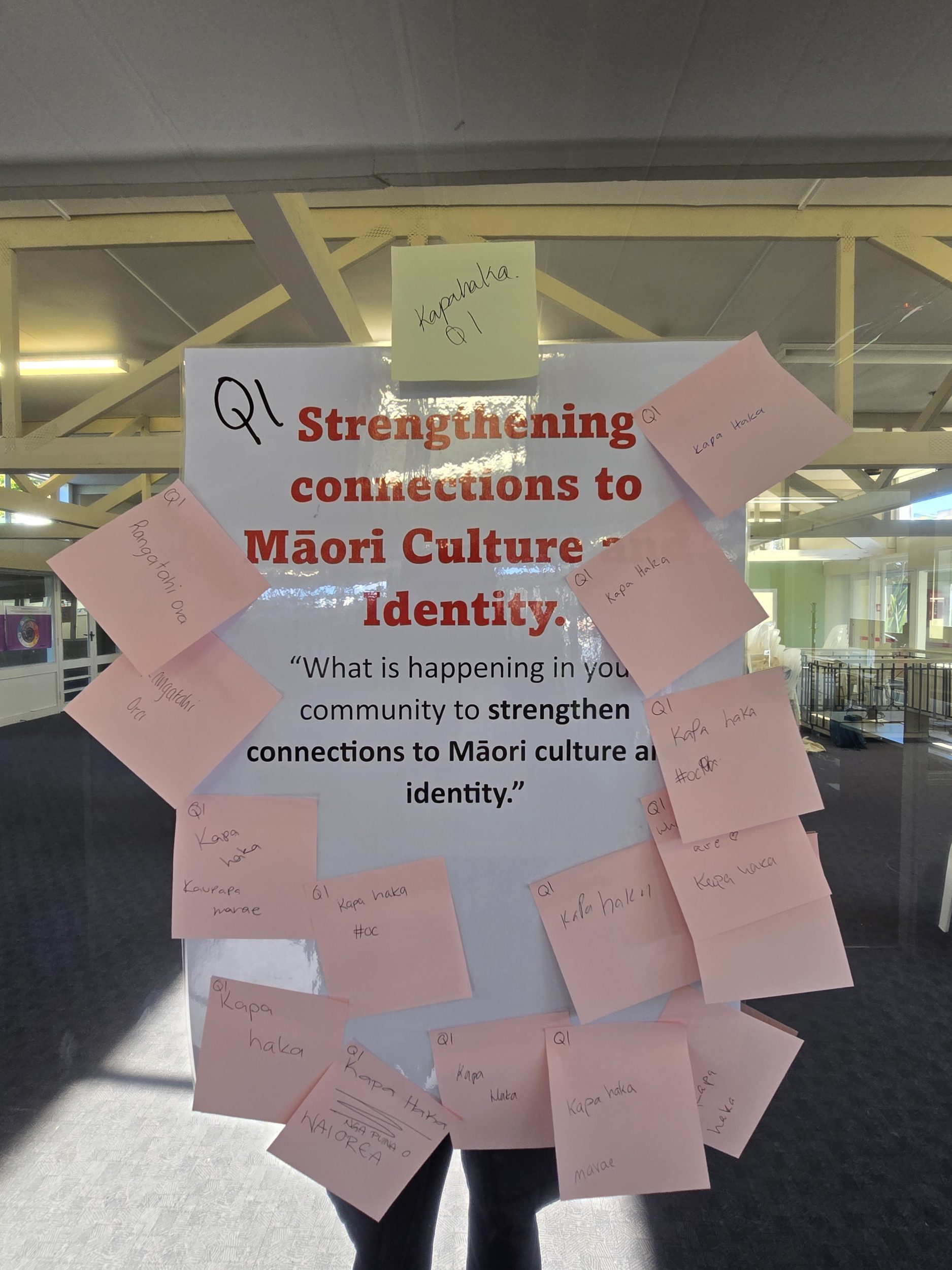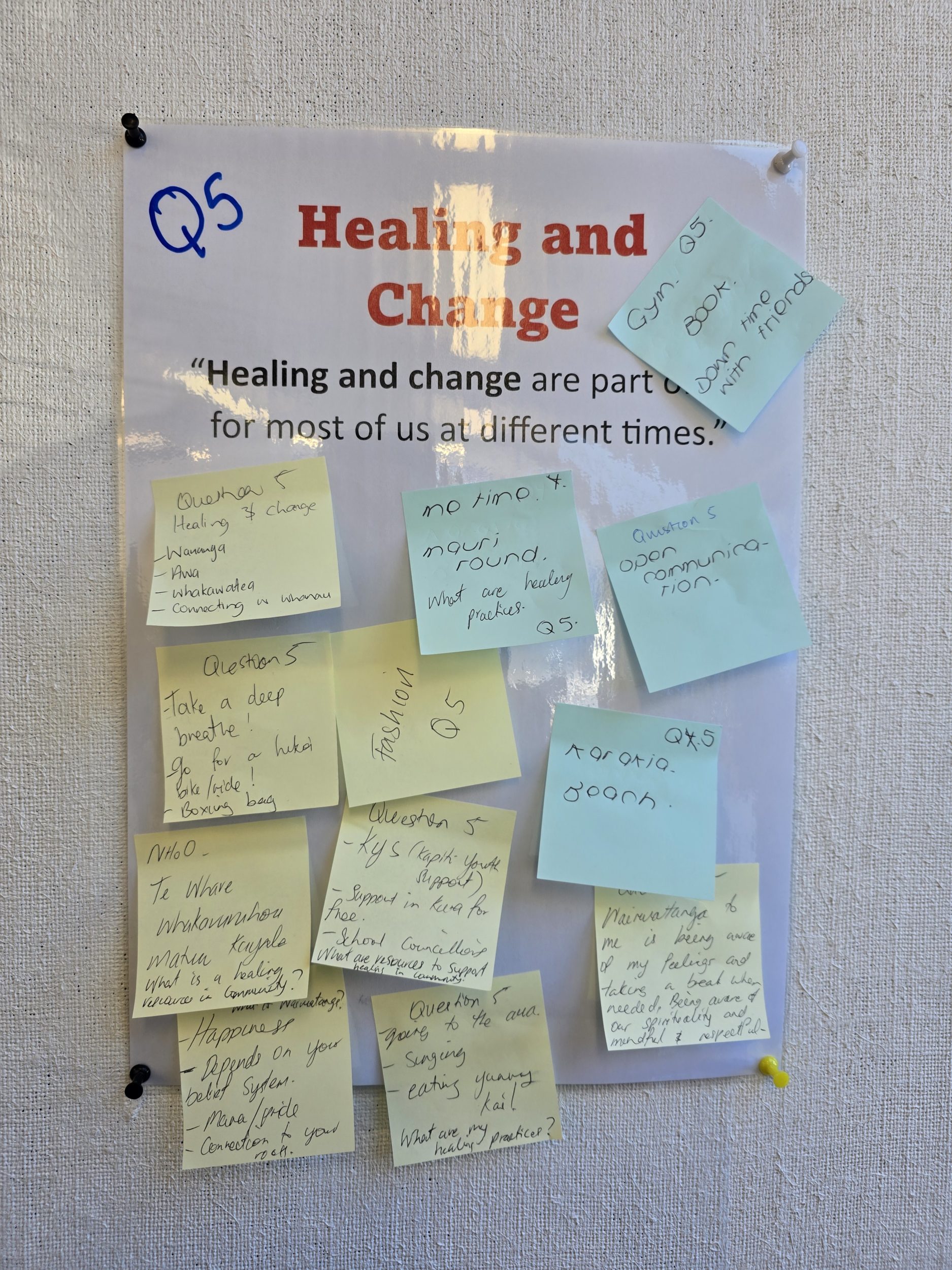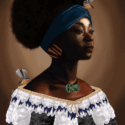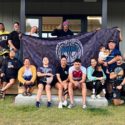Ēhara tāku toa i te toa takatahi, engari he toa takitini.
Our strength is not made from us alone but made from many.
E Tū Whānau supports communities to achieve their own moemoeā, accompanying whānau on journeys of transformation towards being strong, safe and prosperous.
Knowing where they are at and being able to see progress made can be as significant for whānau on journeys of positive change as their destination.
“If the community identifies ‘this is what we want’, it gives people in the community the strength to carry on that mahi, instead of relying on organisations,” says Te Aurere Firmin, Supervisor to Kaiwhakaaraara (Raukawa Whānau Ora Navigators).
Understanding this, E Tū Whānau has worked with whānau and hapori to develop two kaupapa Māori tools: Te Whakaoreore Aromatawai Hāpai ki te Hapori – The Community Mobilisation Assessment Tool and Te Pikitia a te Whānau – The E Tū Whānau Wellbeing Tool.
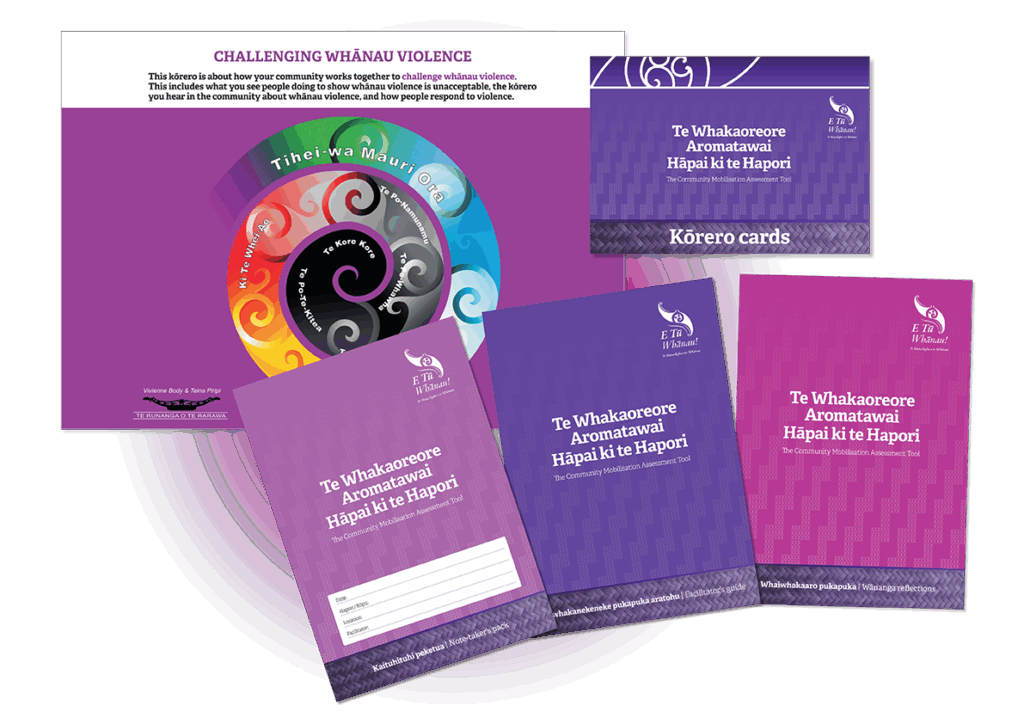
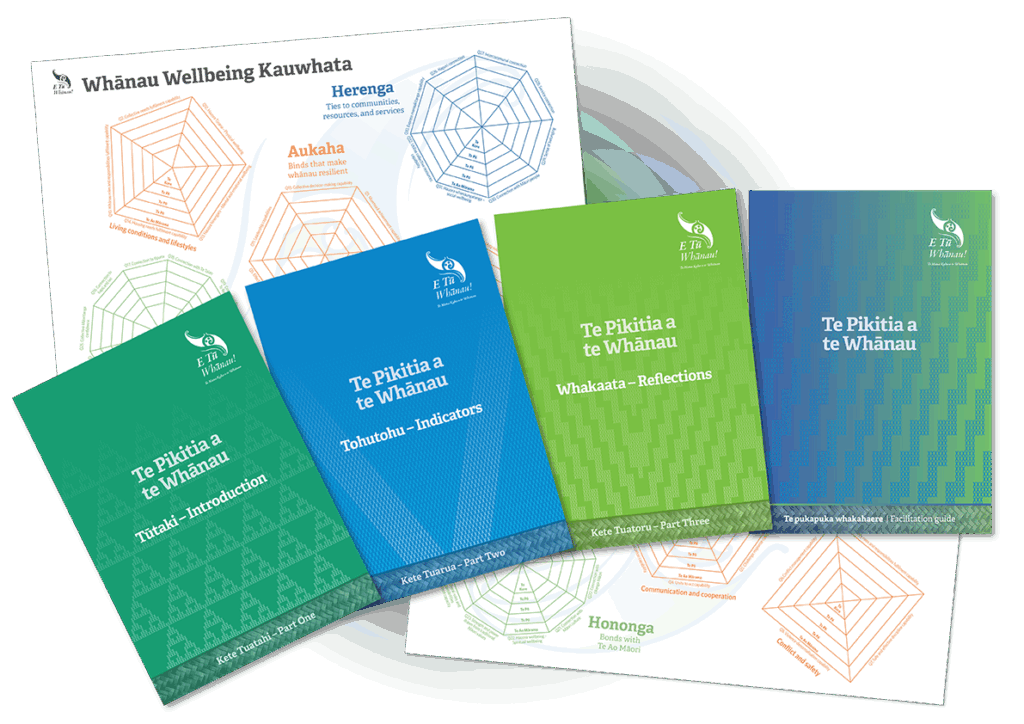
The kete of Te Whakaoreore Aromatawai Hāpai ki te Hapori resources
Te Pikitia a te Whānau resources
Used in wānanga, these innovative tools blend Western science and kaupapa Māori approaches to measure whānau wellbeing and mobilisation for positive change. The tools also support whānau and hapori to understand more about themselves and to take action to improve wellbeing.
“These tools bring to life the mana and foresight of Ann Dysart, founding Pou Whakahaere of E Tū Whānau. She knew that through E Tū Whānau, communities were making a difference for whānau and that developing bespoke tools would help us understand these changes.” Heni Turner, E Tū Whānau Manager
Toi Tū te Ora gets rangatahi buzzing
Te Whakaoreore Aromatawai Hāpai ki te Hapori recently proved wildly popular with over one hundred whānau from across Horowhenua. Together, they attended Toi Tū te Ora, a rangatahi symposium held in Ōtaki in June.
Throughout the one-day event, rangatahi used the tool to focus kōrero and action on their moemoeā for safe relationships, including improving mental wellbeing and addressing physical and sexual violence.
“It was a good day. They used all these different modalities to explore Te Whakaoreore and ended up composing a waiata about E tū e te ao, e tū e te pō (We stand in the universe, we stand in eternity),” says Moerangi Falaoa-Rukaupai, E Tū Whānau kaimahi.
Organised by Raukawa Whānau Ora and Ngā Hapu o Ōtaki, Toi Tū te Ora was planned and led by a rangatahi leadership rōpū, with the support of Jalaine Tahiwi, Pou Oranga o Ngā Hapū o Ōtaki.
“The symposium was about where the rangatahi were at, what they want in the future, and how they’re going to get there,” says Te Kahu Rolleston, Toi Tū te Ora workshop facilitator.
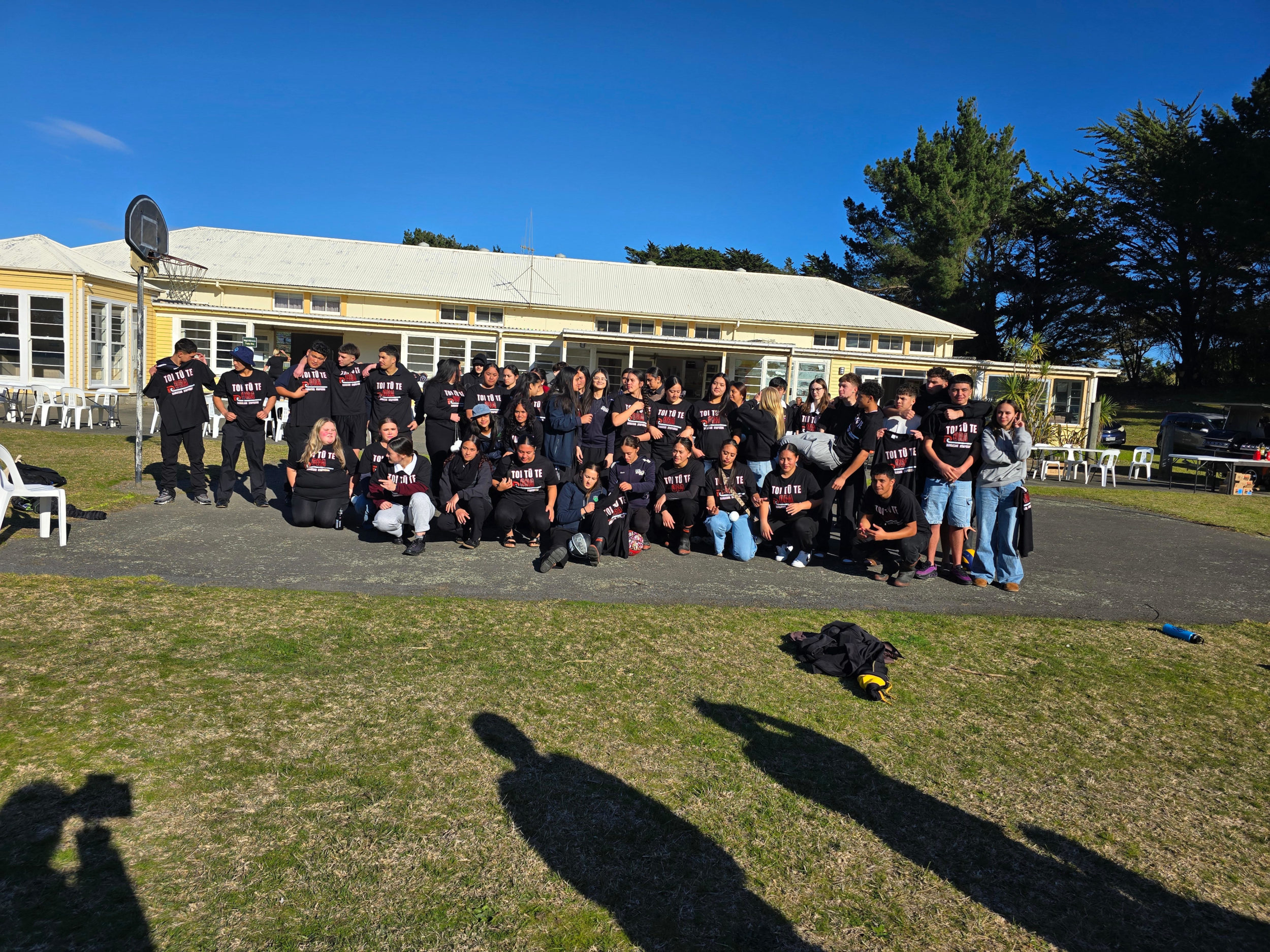
The rangatahi behind the day were clear it had to be fun, creative and relatable. And they clearly delivered on that intention.
“The rangatahi loved the Symposium. They love having kōrero in safe spaces like this and they learnt new ways of working. They also got to look at what they’re doing in their communities and realise how much they are involved in,” says Jalaine.
Following a pōwhiri, rangatahi took part in kōwhaiwhai, music, kapa haka, slam poetry and fashion workshops. Workshops were facilitated by artists, academics and other experts in their fields; they were whare tapere (creative spaces) within which Te Whakaoreore was used to focus the rangatahi on mobilising for change.
“We looked at how we could implement the tool so the rangatahi were still talking about that kōrero in a safe space that was also interactive,” says Jalaine.
Workshops engaged and challenged rangatahi to identify enablers and barriers to safety and wellbeing for their communities using Te Whakaoreore.
“Something beautiful that was happening – the young people were taking time to discuss issues and what they would like as solutions,” says Te Kahu Rolleston, Toi Tū te Ora workshop facilitator.
Rangatahi explored a range of different kōrero and actions related to community safety and wellbeing.
Data collected from the Toi Tū te Ora workshops will be used to shape and guide future initiatives aimed at supporting rangatahi-led change.
Te Whakaoreore – A tool to empower and mobilise communities
Te Whakaoreore is all about better outcomes for communities. It’s a kōrero-based community self-assessment tool that focuses on what’s happening within hapori.
Central to the tool is the Tihei-Wā Mauri Ora construct, an indigenous conceptualisation published by Vivienne Body, Teina Piripi and Te Runanga o Te Rarawa. It supports hapori to kōrero in facilitated wānanga and to assess their current levels of community mobilisation (the action and capability of people in the hapori) for preventing violence within whānau and increasing whānau wellbeing. This includes how to best focus and use community resources to overcome barriers and strengthen enablers for journeys of change.
Te Whakaoreore was developed and refined by Dr Cristy Trewartha, expert in community mobilisation, with the support and involvement of E Tū Whānau kaimahi and hapori connected to E Tū Whānau, including wāhine and māmā from Te Tai Tokerau, Te Hapori Ora in Taupō, Raukawa Whānau Ora in Levin, and Kōkiri Marae in Lower Hutt.
“During those early days, we saw progress over time without even realising that we were doing the mahi. We were starting to see changes in hapori that we work with, and even ourselves,” says Te Aurere Firmin.
During the piloting and refinement phases of Te Whakaoreore, mobilising in relation to rangatahi development emerged as an area of future focus for Raukawa Whānau Ora. In part, this experience led to the tool being used in Toi Tū te Ora.
“I really love Te Whakaoreore now, it has such a good practical application – I love the idea that it can become an accessible narrative tool for people just in communities.” Te Kahu Rolleston, Toi Tū te Ora workshop facilitator.
Want more?
Read more about Te Pikitia a te Whānau and Te Whakaoreore Aromatawai Hāpai ki te Hapori.

